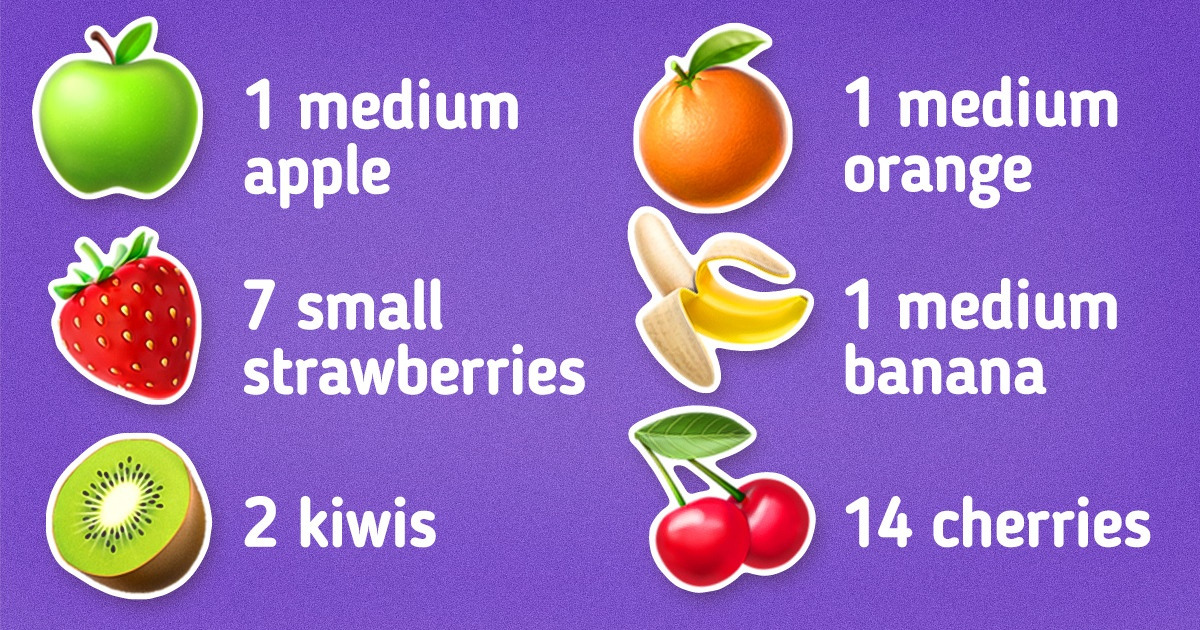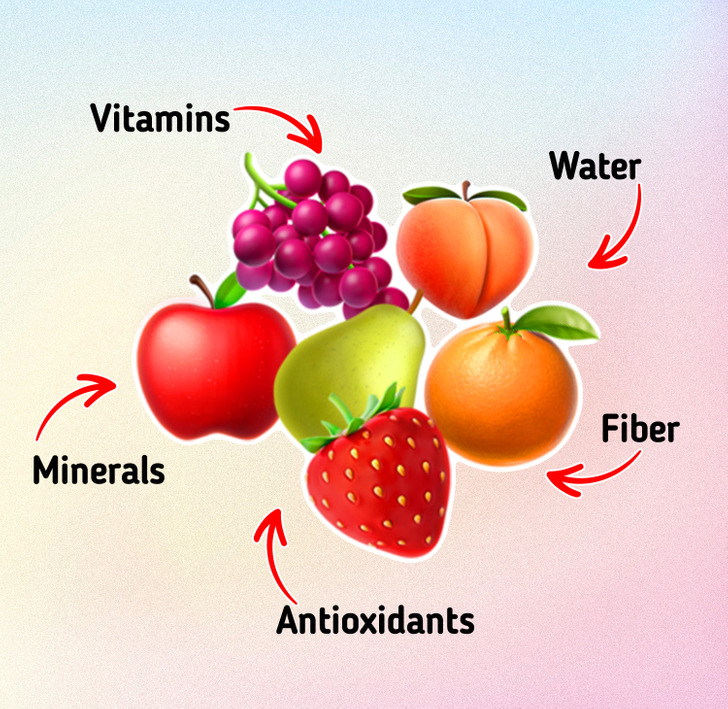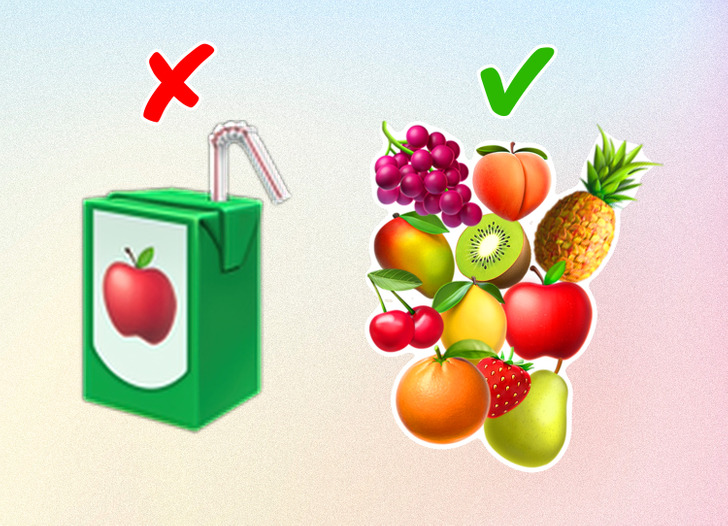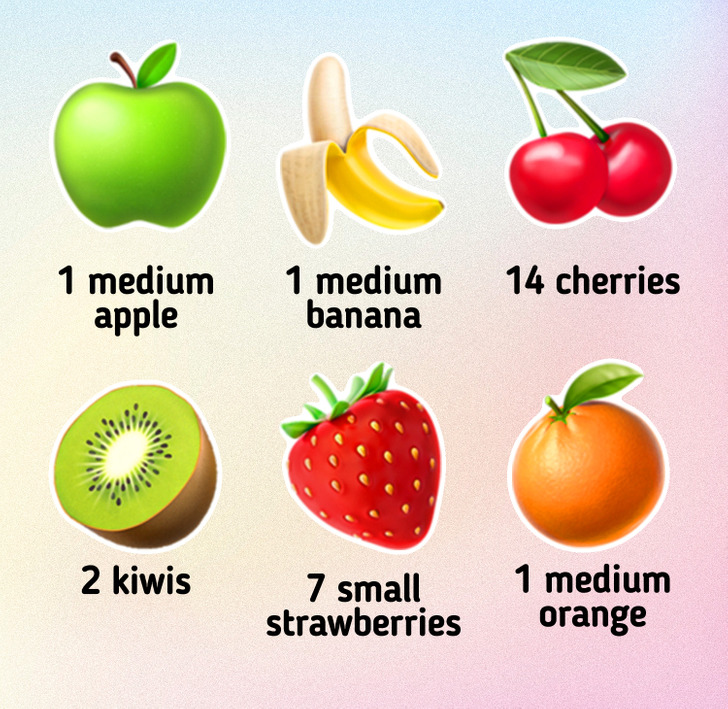How Much Fruit You Should Eat per Day

Fruits contain many nutrients that are necessary for our body. A diet rich in fruit reduces the risk of many chronic diseases. However, what worries some people is the amount of sugar contained in it. 5-Minute Crafts is explaining how much sugar fruit really has and how much fruit a person ought to eat in a day.
1. Benefits of eating fruit
The composition of a fruit’s nutrients will depend on the type of fruit, but most of them contain lots of them. For that reason, it is important to eat a variety of them to maximize the health benefits.
- Fruits can be rich in vitamin C, potassium, folate, and other things. They are also rich in antioxidants, fiber, and water. Their composition will depend on the type of fruit. For that reason, it is vital to eat a variety of fruits to maximize the health benefits.
- Fruit is a good choice for those who want to lose weight because it contains relatively few calories. The fiber and water in them will help you feel full. So you can eat fruit until you are satisfied without getting too many calories.
- The regular consumption of fruit can reduce the risk of many serious diseases.
2. If you can eat too much fruit
The truth is that you can eat too much of anything, including fruit, although this is rarely a problem for most people. Limiting your intake is recommended for those who are more intolerant or follow a very low-carb or ketogenic diet. It is hard to eat a large amount of fruit because it is rich in fiber and water. That will make you feel full quickly, and your body will also react differently to sugar from it.
Tip: You can drink too much fruit juice. It can contain as much sugar as soda. And many juices have added sugars and additives. Juice also contains very little fiber, which is why your body processes natural sugar in the same way as added sugar. If you prefer to drink your fruit than eat it, then blend it into a smoothie that still contains fiber.
3. The optimal amount of fruit per day
Adults should eat at least 5 portions of a variety of fruits each day, where the portion is 80 g. Children should also eat 5 portions, but the amount will vary depending on their age, body size, and physical activity level. Approximately one portion is the amount that can fit in the palm of a child’s hand.
- Small-sized fresh fruit — a portion consists of 2 or more small fruits, like 2 kiwis, 2 plums, 2 satsumas, 3 apricots, 6 lychees, 7 strawberries, or 14 cherries.
- Medium-sized fresh fruit — a portion consists of 1 piece of fruit, such as 1 banana, a pear, an apple, a nectarine, or an orange.
- Large fresh fruit — a portion consists of 1 slice of papaya, 1 large slice of pineapple, 1 slice of melon (5 cm), 2 slices of mango (5 cm each), or half a grapefruit.
- Dried fruit — a portion is around 30 g. You can eat about 1 heaping tablespoon of currants, raisins, or sultanas, 1 tablespoon of mixed fruit, 2 figs, 3 prunes, or 1 handful of dried banana chips.
- Tinned or canned fruit — a portion is approximately the same quantity of fruit that you would eat for a fresh portion. You can eat 2 peach or pear halves, 6 apricot halves, or 8 segments of tinned grapefruit. It is best to choose one in natural juice than in syrup.


